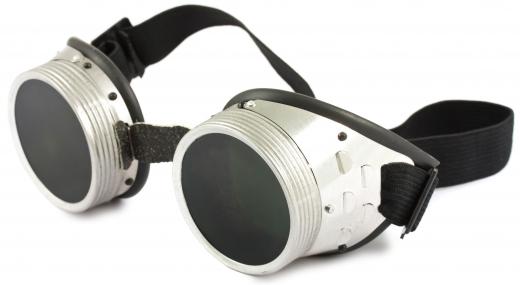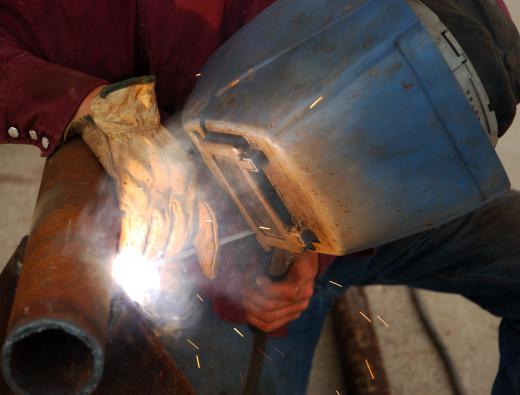At AboutMechanics, we're committed to delivering accurate, trustworthy information. Our expert-authored content is rigorously fact-checked and sourced from credible authorities. Discover how we uphold the highest standards in providing you with reliable knowledge.
What is Butt-Welding?
Butt-welding is the process of joining two pieces of material together along a single edge in a single plane. This process can be used on many types of materials, though metal and thermoplastics are the most common. When two sheets of steel are laid side-by-side and joined together along a single joint, this is an example of butt-welding.
Welding can be done using a large machine or a simple portable welder. The machine applies heat to the two materials that are being joined, which causes them to melt slightly to form a liquid. A filler material made from tungsten or a metal alloy is often added in between the two objects and melted into the pool of liquid. When the heat from the welding machine is turned off, the liquefied metal and filler will quickly solidify to form a single unit. When this process is done correctly, the edges of each object are not distinguishable beneath the filler material.

There are three basic types of butt-welding, and each is chosen based on the thickness of the objects being joined. For thin sheets of metal or plastic, a square weld joint can be used. In this instance, the edges of the objects form 90-degree angles to one another, and can be butted together like two building blocks. This is the simplest and most economical type of butt-welding joint.

When thicker materials are welded, the edges must be beveled to form a single or double V-groove. A single V-groove is used on items of moderate thickness, including many pipes. Filler is placed into the wider part of the V-shape to help firmly secure the objects to one another. On a double V-groove, both the top and bottom of each object is beveled. Filler must be placed on both sides and heated in alternating patterns to form the most secure bond possible. This double V-shape is generally used on very thick or large objects.

Butt-welding is used to produce machines, tools, and equipment in a wide variety of industries. It may be performed in manufacturing plants, on construction sites, or in specialty welding shops. Most cities require welders to be trained and certified to operate welding machines, and may also require the use of personal protective equipment and fire-prevention measures.

One of the primary benefits to butt-welding is that it is the only type of welded joint that can be continuously performed by a machine. Series of objects can be passed under a welder automatically in an assembly-line fashion, making this the most efficient and affordable welding technique in use today. While butt welds are considered very strong and secure, they are generally not recommended for use on objects that will be subject to heavy loads or extreme levels of force.
AS FEATURED ON:
AS FEATURED ON:














Discussion Comments
Butt welding steel is laid end to end. Fillet welding one piece is laid overlapping the other creating a 90 degree corner to which the filler is applied.
Is butt welding possible for combing two reinforcing bars in which the added bar will have to carry the load of the roof? and what kind of welding electrodes will I use for the bars having a structural grade of 40,000 psi?.
what is the difference between butt weld and groove weld? I mean apart from the welding procedure, is there a difference with welding stress calculation?
One type of butt welding is called flash butt welding. With flash butt welding, the two pieces of metal are laid end to end, then "flashed" with welding current, causing them to weld together.
It requires a special flash butt welding machine, and is usually used to join rods, chains, bars, etc. together.
Flash butt welding is popular because of the strong bond it creates between pieces -- in some cases, as strong as strong as parent metal
@lightning88 -- Butt welding and fillet welding are different in a few areas.
For butt welding, you put two pieces of metal flush up against each other, in fillet welding you leave a small gap which is then filled with welding rod.
Also, fillet welding usually uses lower voltage and speed than butt welding of a similar nature.
What is the difference between butt welding and fillet welding?
Post your comments